Development Tools for Embedded Vision
ENCOMPASSING MOST OF THE STANDARD ARSENAL USED FOR DEVELOPING REAL-TIME EMBEDDED PROCESSOR SYSTEMS
The software tools (compilers, debuggers, operating systems, libraries, etc.) encompass most of the standard arsenal used for developing real-time embedded processor systems, while adding in specialized vision libraries and possibly vendor-specific development tools for software development. On the hardware side, the requirements will depend on the application space, since the designer may need equipment for monitoring and testing real-time video data. Most of these hardware development tools are already used for other types of video system design.
Both general-purpose and vender-specific tools
Many vendors of vision devices use integrated CPUs that are based on the same instruction set (ARM, x86, etc), allowing a common set of development tools for software development. However, even though the base instruction set is the same, each CPU vendor integrates a different set of peripherals that have unique software interface requirements. In addition, most vendors accelerate the CPU with specialized computing devices (GPUs, DSPs, FPGAs, etc.) This extended CPU programming model requires a customized version of standard development tools. Most CPU vendors develop their own optimized software tool chain, while also working with 3rd-party software tool suppliers to make sure that the CPU components are broadly supported.
Heterogeneous software development in an integrated development environment
Since vision applications often require a mix of processing architectures, the development tools become more complicated and must handle multiple instruction sets and additional system debugging challenges. Most vendors provide a suite of tools that integrate development tasks into a single interface for the developer, simplifying software development and testing.
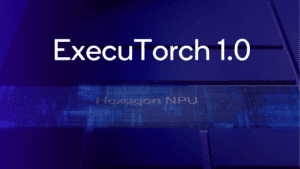
Bringing Edge AI Performance to PyTorch Developers with ExecuTorch 1.0
This blog post was originally published at Qualcomm’s website. It is reprinted here with the permission of Qualcomm. ExecuTorch 1.0, an open source solution to training and inference on the Edge, becomes available to all developers Qualcomm Technologies contributed the ExecuTorch repository for developers to access Qualcomm® Hexagon™ NPU directly This streamlines the developer workflow

Axelera Announces Europa AIPU, Setting New Industry Benchmark for AI Accelerator Performance, Power Efficiency and Affordability
Delivers 629 TOPs processing power for multi-modal AI applications from the edge to the data center. Eindhoven, NL – October 21, 2025 – Axelera AI, the leading provider of purpose-built AI hardware acceleration technology, today announced Europa™, an AI processor unit (AIPU) that sets a new performance/price standard for multi-user generative AI and computer vision applications.
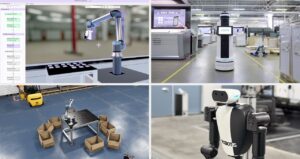
NVIDIA Contributes to Open Frameworks for Next-generation Robotics Development
This blog post was originally published at NVIDIA’s website. It is reprinted here with the permission of NVIDIA. At the ROSCon robotics conference, NVIDIA announced contributions to the ROS 2 robotics framework and the Open Source Robotics Alliance’s new Physical AI Special Interest Group, as well as the latest release of NVIDIA Isaac ROS. This
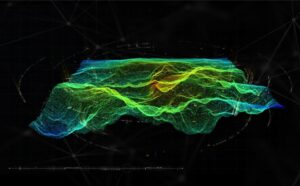
Unleash Real-time LiDAR Intelligence with BrainChip Akida On-chip AI
This blog post was originally published at BrainChip’s website. It is reprinted here with the permission of BrainChip. Accelerating LiDAR Point Cloud with BrainChip’s Akida™ PointNet++ Model. LiDAR (Light Detection and Ranging) technology is the key enabler for advanced Spatial AI—the ability of a machine to understand and interact with the physical world in three
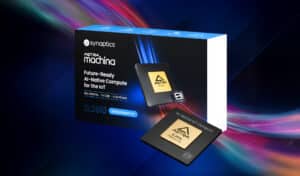
Introducing Synaptics Astra SL2610: The Edge Processor Engineers Have Been Waiting For
This blog post was originally published at Synaptics’ website. It is reprinted here with the permission of Synaptics. There’s a growing tension in the world of connected products. On one side, engineers find themselves having to push microcontrollers far beyond their limits, resorting to bolted-on accelerators, extra parts and delicate pipelines just to keep pace
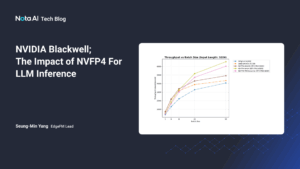
NVIDIA Blackwell: The Impact of NVFP4 For LLM Inference
This blog post was originally published at Nota AI’s website. It is reprinted here with the permission of Nota AI. With the introduction of NVFP4—a new 4-bit floating point data type in NVIDIA’s Blackwell GPU architecture—LLM inference achieves markedly improved efficiency. Blackwell’s NVFP4 format (RTX PRO 6000) delivers up to 2× higher LLM inference efficiency
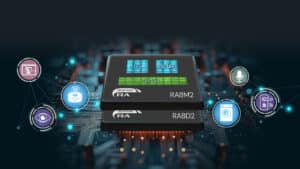
Renesas Adds Two New MCU Groups to Blazing Fast RA8 Series with 1GHz Performance and Embedded MRAM
RA8M2 Devices Address General-Purpose Applications and RA8D2 Devices Target High-End Graphics and HMI; Both Offer Dual-Core Options for Even More Horsepower TOKYO, Japan, October 22, 2025 ― Renesas Electronics Corporation (TSE:6723), a premier supplier of advanced semiconductor solutions, today introduced the RA8M2 and RA8D2 microcontroller (MCU) groups. Based on a 1 GHz Arm® Cortex®-M85 processor

Don’t Give Your Business Data to AI Companies
This blog post was originally published at Plainsight Technologies’ website. It is reprinted here with the permission of Plainsight Technologies. I have joined Plainsight Technologies as CEO to do something radical: not steal your data. Vision is our most powerful sense. We navigate the world, recognize faces, assess our surroundings, operate vehicles, and make split-second

